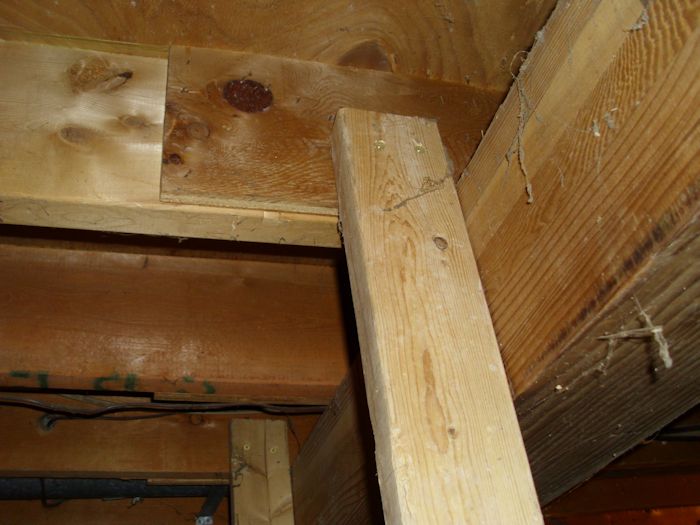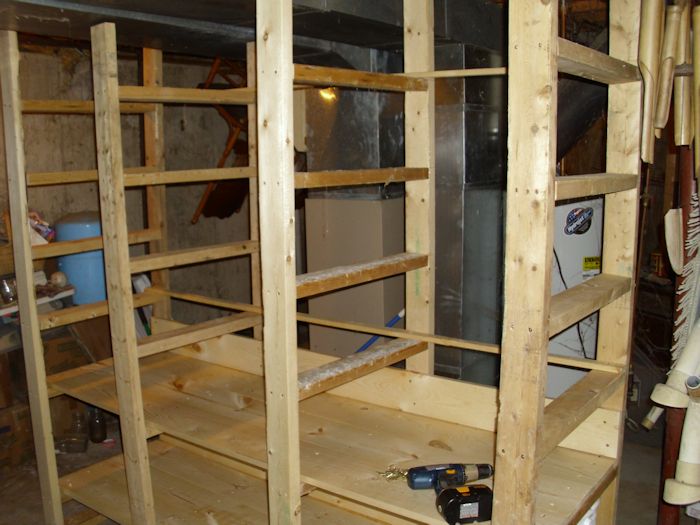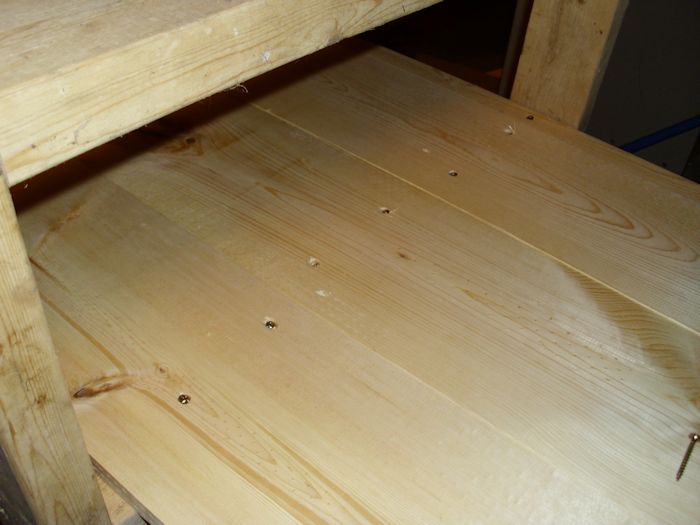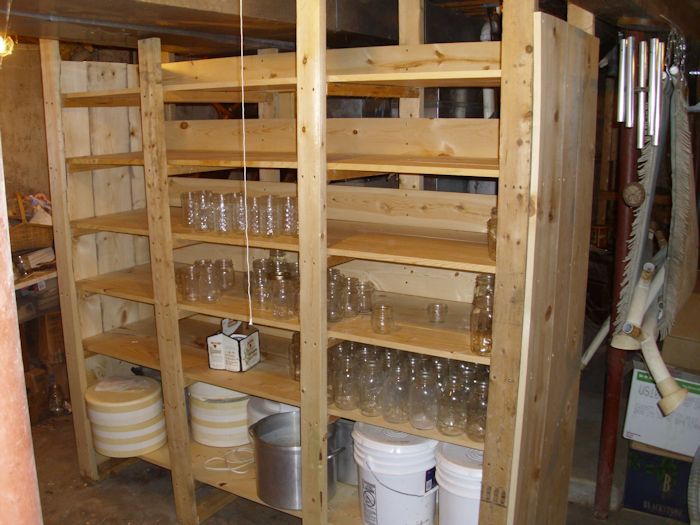Creating a place to store your canned goods is an essential part of making self-sufficiency work. In Fun is Where You Find It! (Part 3) you see one view of the larder shelving we use to store our canned goods in the basement. The shelving has to be built to withstand the weight of the canned goods without sagging. In addition, you want to be able to support part of someone’s weight when they need to regain their footing. If you are looking for supplies to help with your building project, you may want to visit a trade supplier website similar to Tradefix Direct, where you may be able to find the supplies you need for your building needs.
In order to create our shelving, I played with some wood and actually weighted it down to see when it would sag. I then used those assumptions to start designing the shelving and to feed the numbers into the Sagulator. The maximum amount of sag you should be willing to tolerate is 0.01 inch per foot. You need an engineering margin to ensure the shelves will hold up.
Of course, the problem is getting the numbers the Sagulator requires. A typical quart jar of canned goods filled with a liquid weighs 3 pounds. If you make the shelves 24 inches deep using three 1 × 8 boards and create spans of 25 inches, you can store 42 jars per span for a total weight of 126 pounds. Using #2 Douglas fir, you get a sag of 0.01 inch. You must consider the kind of wood that you’re using as part of your calculation and keep refining the measurements until you obtain a setup that works.
You also need to consider the shelf spacing. It’s important to allow finger spacing between the shelves so that someone can reach all the way into the back to retrieve a jar without problem. After a lot of experimentation, I came up with the following shelf spacing:
- 8 inches for quart jars stacked one high
- 10 inches for pint jars stacked two high
- 16 ¾ inches for 5 gallon buckets and canning equipment
To create our new larder shelving, I started with four 2 × 4 supports tied into the ceiling joists. You absolutely don’t want the shelves falling on you, so make sure you use sturdy screws. I relied on 5-inch heavy decking screws that went completely through both the 2 × 4 support and the joist as shown here.
Make sure you use at least two sturdy screws to hold each framing member for the shelves for each shelf you create. My shelving ended up being 75 inches long, 24 inches deep, and 84 inches high. The shelving arrangement includes one shelf for five gallon buckets, two shelves for quart jars, and three shelves for pint jars as shown here.
Make absolutely certain you keep everything square and level as you build because any deviation will lower the amount of weight the shelving can carry. Each shelf should be tied into every framing member with at least two screws. In this case, that means eight screws per board or 24 screws for each shelf (because there are three 1 × 8 boards used for each shelf).
Because of the shelf heights, you’ll find that you have to insert the screws at an angle. Actually, this is a good way to add the shelving anyway because the screws gain greater purchase in the wood. However, make sure you alternate the direction you screw the screws so that you don’t end up racking the shelving (making it out of square or level). Of course, you may be able to insert the screws at a better angle if you had access to the best crossover ladder that you can find. My friend was telling me about them once, as he is required to use them whilst he is working in a warehouse. They can help you to reach things at a certain height, as well as keeping you safe at the same time, as otherwise, you could face some serious injuries. Even though the ladder is a good idea in this scenario, I think they are primarily used for things at a greater height. So, adjusting is key. Here is how your screw pattern should look.
In this case, the first and third shelves have screws coming in from the right, while the second (center) shelf has them coming in from the left. In the next section, I reversed the direction so that the first and second shelves came in from the left, while the second shelf came in from the right. Alternating directions like this helps make the shelves stronger.
Every shelf should also have a backer board to keep the canned goods from simply falling out the back of the shelf. In this case, I used 1 × 6 boards secured with two screws in each section. The backer boards also provide added strength to the entire unit.
Finally, to keep things from sliding out of either side and to also provide places to put hooks for items we wish to hang, I added end pieces. These end pieces are made from two 1 × 10 and one 1 × 8 boards. Here is how the shelving looked after I finished it (with some items already in place).
When building shelving, make sure you take time to ensure that the shelving will actually hold the items you want to put on it. The essential issue is to control sag so that the shelving doesn’t fail in the long term. Let me know your thoughts about larder shelving at [email protected].




